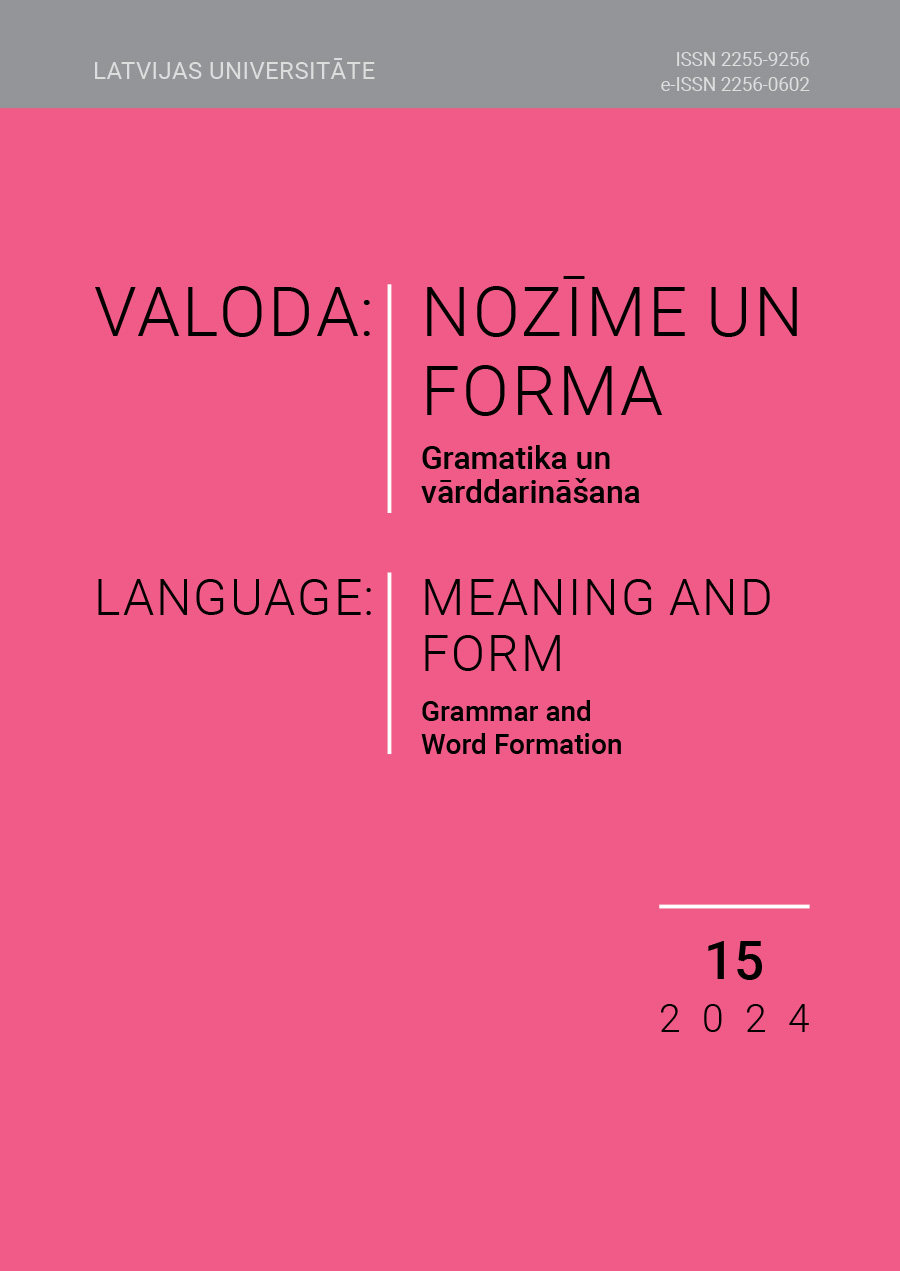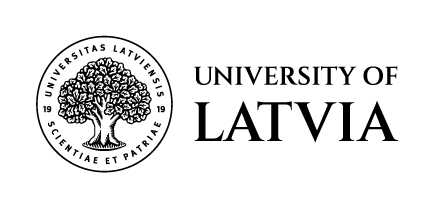Modal verb drīkstēt ‘may’ in indicative mood and the conative function of language in the Corpus of the Saeima
DOI:
https://doi.org/10.22364/vnf.15.02Keywords:
modality, modal verb, indicative mood, the conative function of languageAbstract
The focus of the study is on Latvian modal verb drīkstēt ‘may’ in indicative mood. The object of the research is verbatim reports from the Corpus of the Saeima (the parliament of Latvia). When analysing the use of drīkstēt ‘may’ in indicative mood, in addition to determining and interpreting its modal meanings, its possible connection to the conative function of language, as well as the frequency of the use is being taken into account. According to statistics, the most used form of modal verb drīkstēt ‘may’ is the negated present simple third person, the least used – the past simple and future simple first and second person, also the compound tenses. It has been also observed that drīkstēt ‘may’ is more often used in negation (5200 uses) than in affirmation (1745 uses). The analysis of these uses shows that in verbatim reports of the Saeima it is more common to express general prohibitions, instructions and reprimands, which often are rather dictated by general regulations or even laws, and not so much by the author of the text; furthermore, the addressee often is not specific, and thus, the conative function is indirect.
References
Auziņa, Ilze et al. 2018. LR 5.–13. Saeimas sēžu stenogrammu korpuss (Saeima). CLARIN-LV digitālā bibliotēka. Pieejams: http://hdl.handle.net/20.500.12574/50
Bussmann, Hadumod. 2006. Routledge Dictionary of Language and Linguistics. Trauth, Gregory, Kazzazi, Kerstin (transl., eds). London: Taylor & Francis. https://doi.org/10.4324/9780203980057
Jērāne, Santa et al. 2023. Mūsdienu latviešu valodas vārdnīca. CLARIN-LV digitālā bibliotēka. Pieejams: http://hdl.handle.net/20.500.12574/88; https://mlvv.tezaurs.lv
Brown, Penelope, Levinson, Stephen. 1987. Politeness: some universals in language usage. Studies in Interactional Sociolinguistics. 4. Gumperz, John Joseph. (ed.). Cambridge: Cambridge University Press. https://doi.org/10.1017/CBO9780511813085
Chilton, Paul Anthony. 2004. Analysing Political Discourse: Theory and Practice. London/New York: Routledge. https://doi.org/10.4324/9780203561218
Daina, Anete. 2015. Darbības vārda varēt modālā semantika un funkcijas latviešu valodā. Valoda: nozīme un forma. 6, 89–102. https://doi.org/10.22364/vnf.6
Daina, Anete. 2022. Darbības vārdi varēt, drīkstēt un valodas ietekmējošā funkcija Latvijas Republikas Saeimas 2018. gada sēžu stenogrammās. Vārds un tā pētīšanas aspekti. 26, 24–35. https://doi.org/10.37384/VTPA.2022.26.024
Daina, Anete. 2023. Darbības vārda varēt lietojums vēlējuma izteiksmē Saeimas sēžu stenogrammu korpusā. Valoda: nozīme un forma. 14, 22–32. https://doi.org/10.22364/vnf.14.02
Holvoet, Axel. 2007. Mood and Modality in Baltic. Kraków: Wydawnictwo universitetu Jagiellońskiego.
Ivulāne, Baiba, Kalnača, Andra. 2013. Darbības vārdu gramatiskās resp. sintaktiskās funkcijas. Latviešu valodas gramatika. Grigorjevs, Juris, Nītiņa, Daina (red.). Rīga: Latvijas Universitātes Latviešu valodas institūts, 462–470.
Kalnača, Andra. 2007. Modalitātes tipoloģija un latviešu valodas izteiksmes. Vārds un tā pētīšanas aspekti. 11, 166–173.
Kalnača, Andra. 2013. Darbības vārds (verbs). Latviešu valodas gramatika. Grigorjevs, Juris, Nītiņa, Daina (red.). Rīga: Latvijas Universitātes Latviešu valodas institūts, 456–564.
Kalnača, Andra, Lokmane, Ilze. 2021. Latvian Grammar. Rīga: University of Latvia Press. https://doi.org/10.22364/latgram.2021
Kalnača, Andra, Lokmane, Ilze. 2022. The verb vajadzēt ‘to need, must’ in Latvian: its Livonian origins, modal and distributional features. Eesti ja Soome-Ugri Keeleteaduse Ajakiri. Journal of Estonian and Finno-Ugric Linguistics. 13(1), 91–120. https://doi.org/10.12697/jeful.2022.13.1.04
Lyons, John. 1977. Semantics. 2. Cambridge: Cambridge University Press.
Palmer, Frank Robert. 2001. Mood and Modality. 2nd ed. Cambridge: Cambridge University Press. https://doi.org/10.1017/CBO9781139167178
Downloads
Published
Issue
Section
License

This work is licensed under a Creative Commons Attribution-NoDerivatives 4.0 International License.


